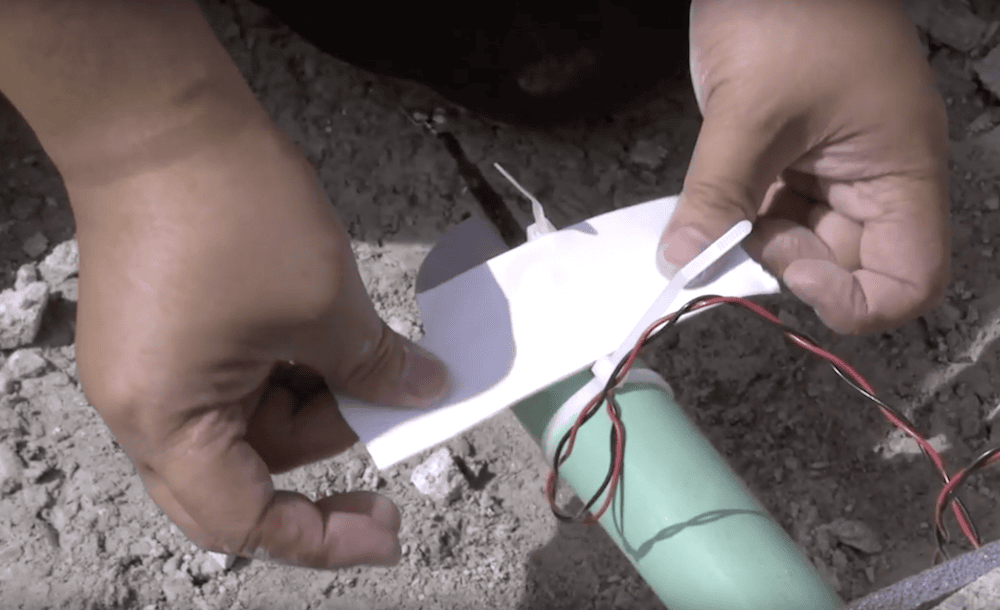
[Image above] Could piezoelectric sensors revolutionize how concrete strength gain is tested? Credit: Purdue Engineering, YouTube
It can be annoying when road lanes are closed off due to construction. But it is even worse when lanes are closed repeatedly because cars drove on the concrete before it properly matured.
In standard industrial cases, concrete is considered to reach full strength after 28 days; at seven days, concrete is cured to at least 70% full strength. But the exact time required before a road is ready to handle heavy traffic depends strongly on the specific mixture of concrete used. And if heavy traffic is allowed on the concrete too soon, cracks will form more readily and the road will require replacement sooner than expected.
The two main methods to determine concrete preparedness—flexural-strength testing and maturity testing—are often unreliable. Flexural-strength testing, which involves casting a heavy concrete beam onsite and then transferring it to another location to observe concrete maturity, commonly produces inaccurate conclusions because of differences between lab and field conditions.
On the other hand, maturity testing, which uses temperature as an indication of strength, requires unique estimates for each type of concrete, so thousands of different temperature-strength correlation curves are needed to predict the thousands of different concrete mixes.
In contrast to these methods, researchers at Purdue University are working with the Indiana Department of Transportation (INDOT) to test a new, more high-tech method—embedded piezoelectric sensors.
Piezoelectric sensors are devices that convert mechanical energy into electrical energy, which allows them to record information on physical phenomena such as pressure and strain.
Researchers have demonstrated successfully the use of lead zirconate titanate (PZT) patches as piezoelectric sensors that monitor concrete structural health and detect damage. “However, the feasibility of EMI [electromechanical impedance] method on an understanding of the strength gains of concrete” is yet to be investigated, researchers write in a paper published last year.
The researchers—from Purdue University, INDOT, and Tongji University and Fujian University of Technology in China—created a PZT sensor system to evaluate how effectively a piezoelectric-based device could monitor concrete compressive strength gains. They concluded that an EMI method could be used to conduct nondestructive, in-situ measurements of the cement paste strength gain process.
This year, senior author of the study Luna Lu, associate professor of civil engineering at Purdue University, and her students are working with INDOT engineers to test the sensors in real-world highways. Ideally, “Through these sensors, a contractor will know exactly when the concrete is mature enough to accommodate heavy truck loads and the curling and warping stress,” Tommy Nantung, research manager at the INDOT Research and Development Division, says in a Purdue University press release.
Following the tests, INDOT plans to adopt the sensors permanently. Additionally, the Purdue team is working with the Federal Highway Administration on a nationwide pooled fund study to implement the technology in other states, including California, Texas, Kansas, and Missouri.
“The impact of this study can be revolutionary as it does not require any conventional mechanical testing or expensive and heavy test setups in the field. There is no need for calibration for each different mix design,” Lu says in the press release.
Because of the patch-style design of the sensors, each sensor measures only an 11-inch area of concrete, requiring many sensors to be embedded along a concrete section. Perhaps in the future a tubular-style design, which can measure larger areas, could be tried in this application as well.
To learn more about the project and the sensors, check out the video below.

Credit: Purdue Engineering, YouTube
Author
Lisa McDonald
CTT Categories
- Cement
- Construction
- Transportation


